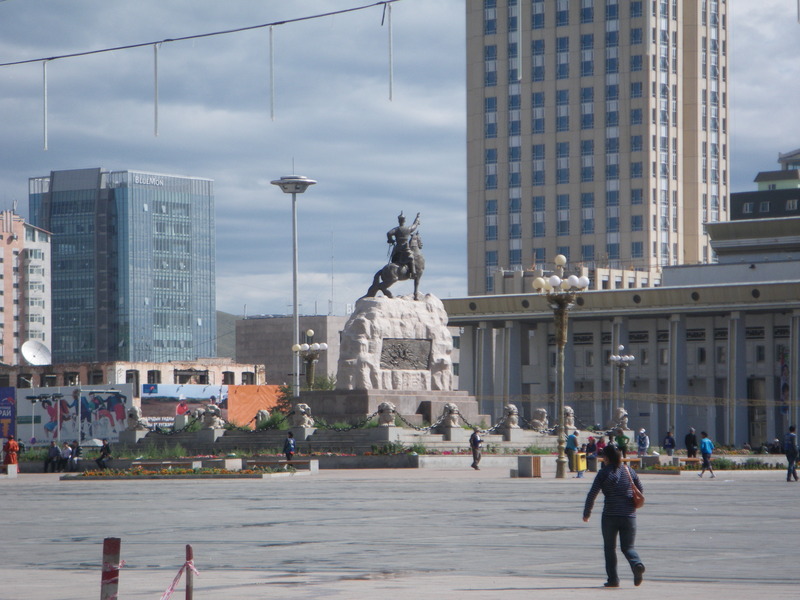
Ulaan Baatar is the capital of Mongolia. It is surrounded by mountains, some of them forested. It is much wetter than the desert, and one of the day that I was here, it was rainy and cold, colder than Sydney in winter.
The name of the city is also spelled Ulan Bator. The stress goes on the second syllable of the first word, and the first syllable of the second word. The name means "red hero", and is one of several names the city has had. The city has been in several locations as well. Back when most of the buildings were ger, the city was moved from one place to another, more than once.
The current name was given after the communist revolution in the 1920s. I think that was in honor of Sukhbaatar, the leader of the communist troops who, with the Soviet red army, liberated Mongolia from Manchu rule.
Here is his statue in Sukhbaatar square, in the very center of Ulaan Baatar.

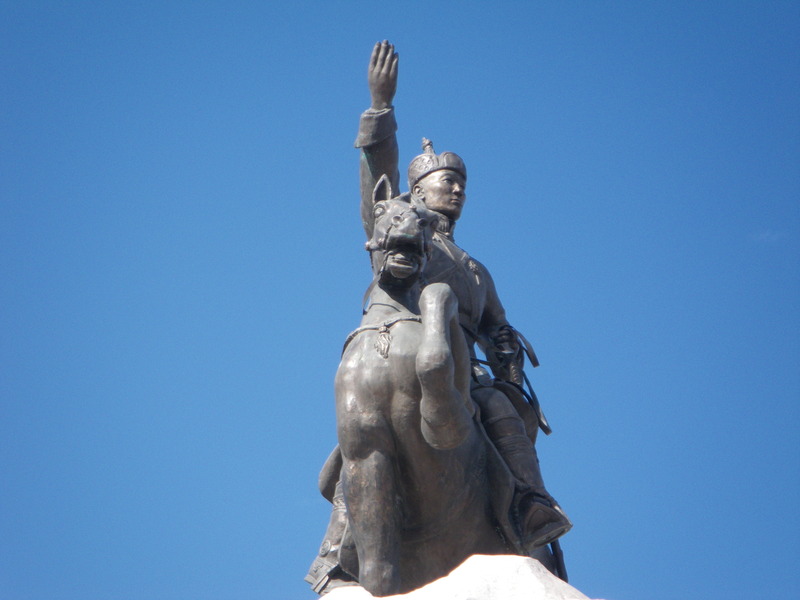
You can see that this is the center of Ulaan Baatar because the center spot is marked.
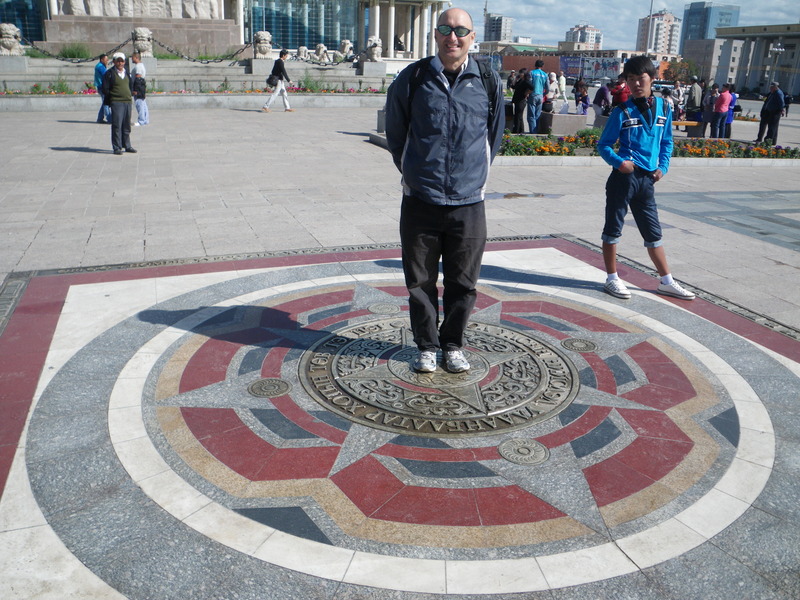
Another great Mongol hero is Chinggis Khan, Genghis Khan (the 'g' in the second part of "Chinggis" are pronounced as in "go"). There is a very powerful statue of Chinggis Khan in the front of Government house (the Parliament building) in Sukhbaatar square. His portrait is also on most of the banknotes.


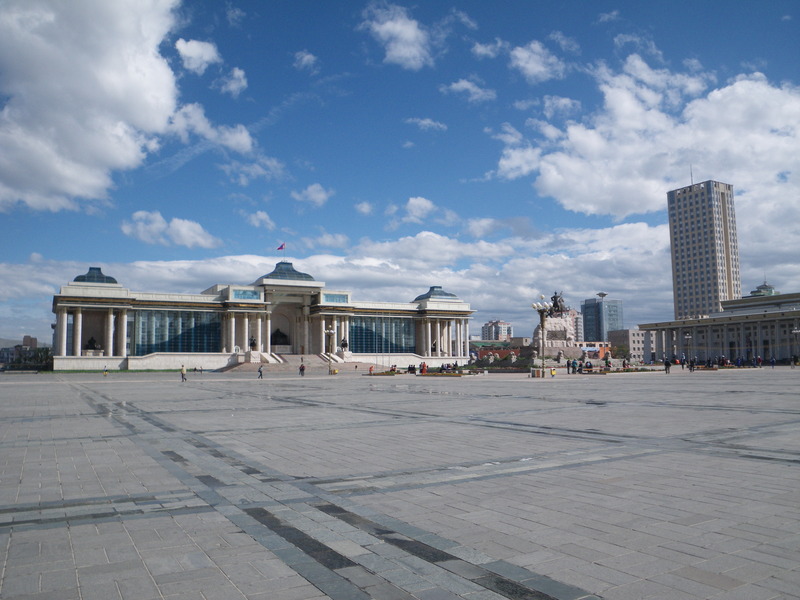
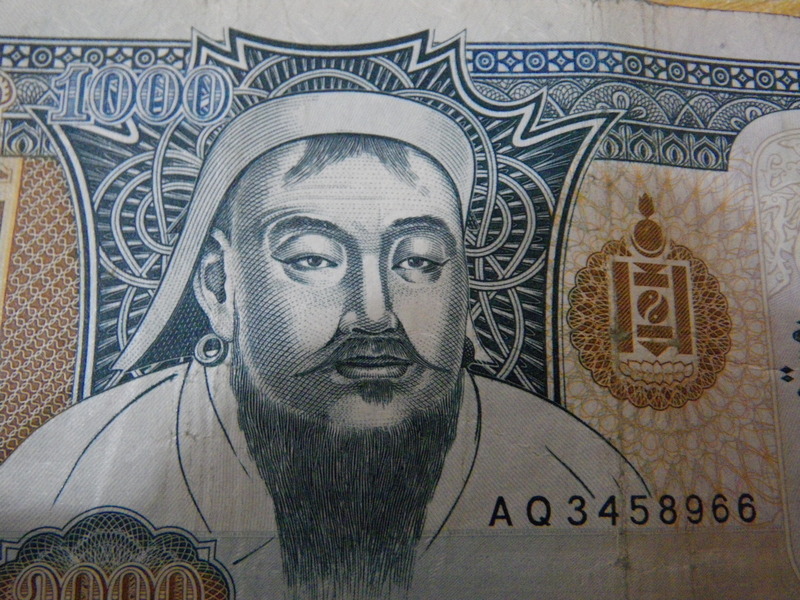
While Chinggis Khan was a very fierce warrior, his major accomplishment was in bringing together all the Mongol clans. Once they stopped fighting each other, they were able to conquer a lot of Asia and parts of Europe.
The fence around Government house is decorated with the Mongolian national symbol, which also appears on the Mongolian flag.


Downtown Ulaan Baatar is a thoroughly modern city, including a stock exchange.
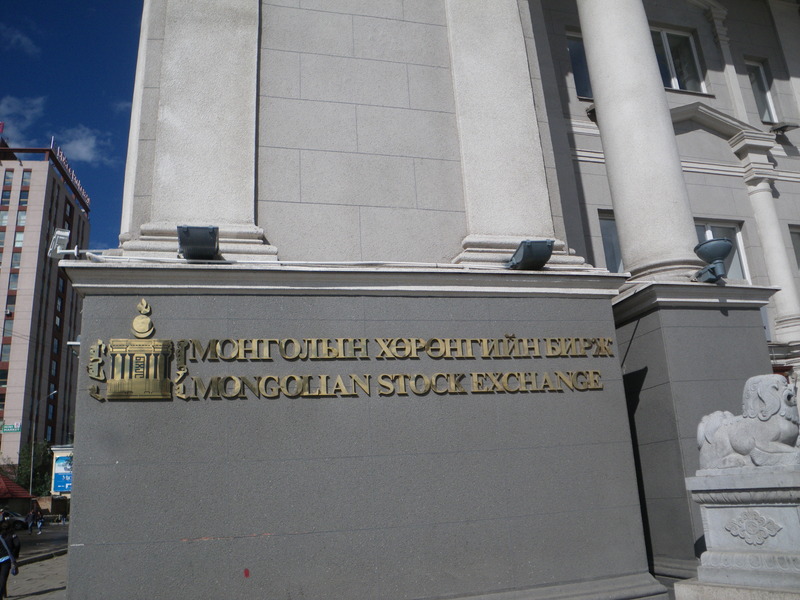
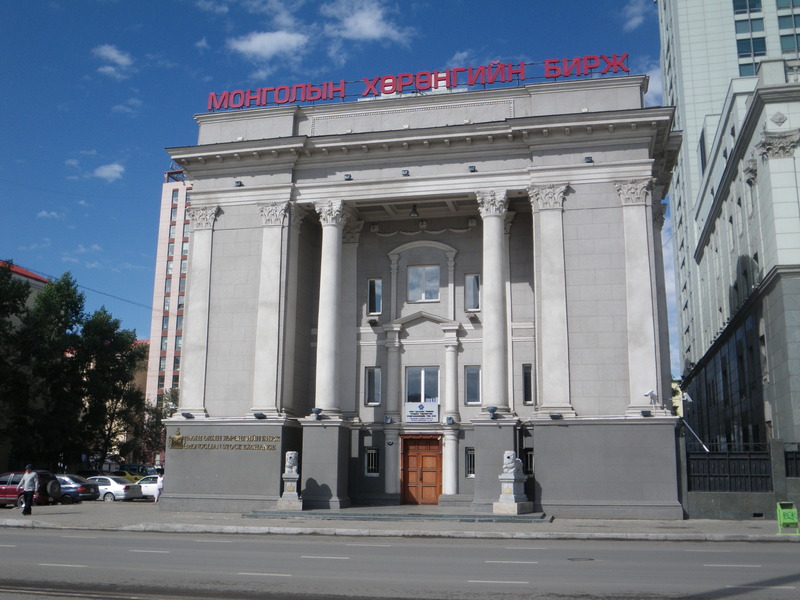
And interesting buildings.
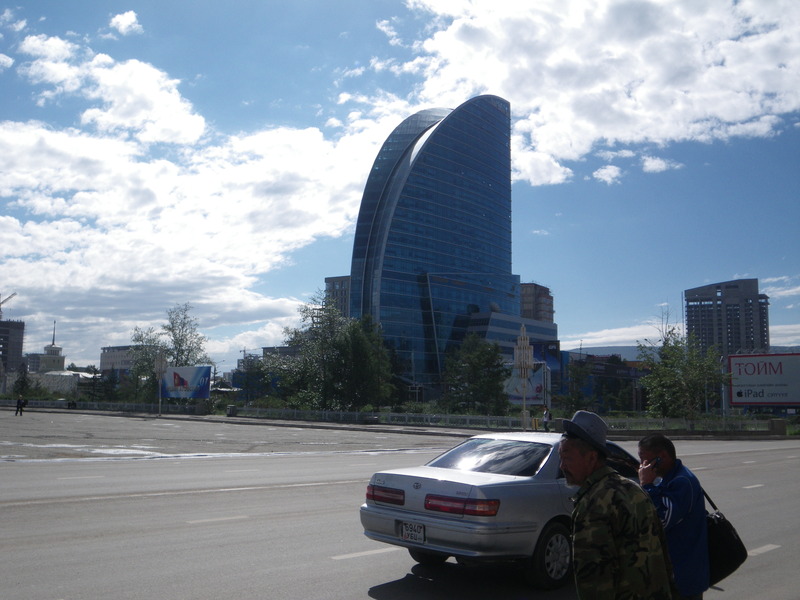
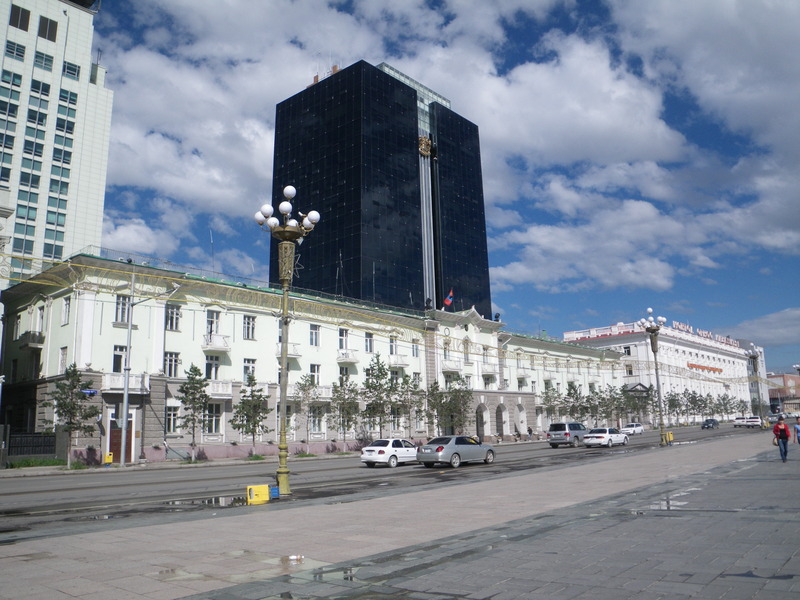
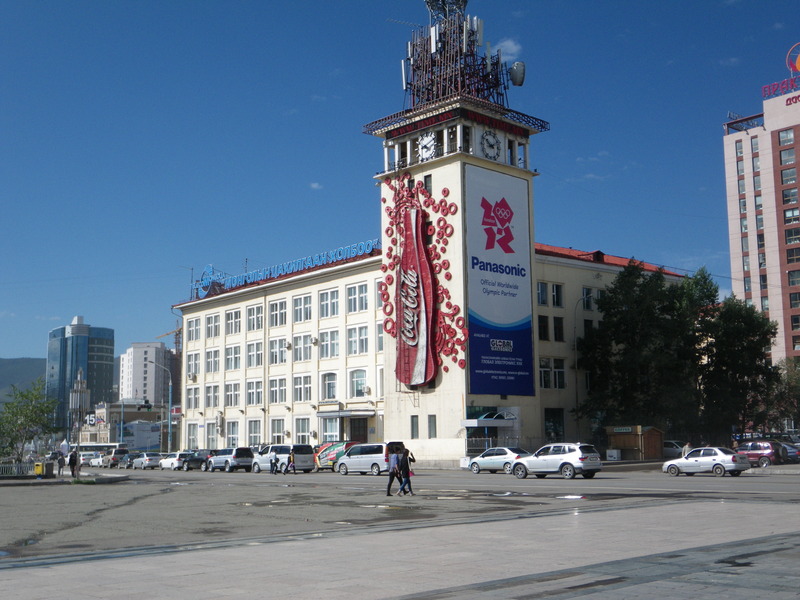
I could see from the train that on the outskirts of Ulaan Baatar, many houses had a ger in the yard.
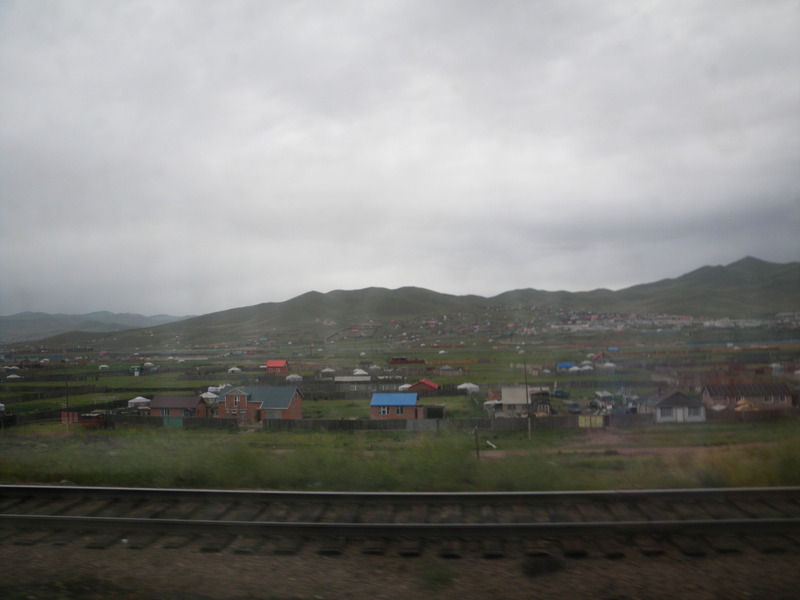
In general, Ulaan Baatar appears to be flourishing. It is my understanding that, like Western Australia, Mongolia is benefiting from a mining boom. I have also heard reports, for both Mongolia and Western Australia, that some people are benefiting a lot and becoming millionaires, while other people are doing quite poorly and not benefiting from the boom. But overall, the impression in Ulaan Baatar is that things are good. There was quite a bit of road construction, possibly partly responsible for the rush hour gridlock that I observed. At 6pm one afternoon, I got off the bus so I could walk to my destination more quickly.
Overall, Ulaan Baatar must be a good place to live. I met one Dutch person who was in Mongolia for 6 months, and was sad to be heading back to Holland. And the people on the streets seemed to be generally happy.
There is one monastery in Ulaan Baatar, Gandantengchenling, that was not completely destroyed during the Communist period. One building in Gandantengchenling, Migjed Janraisig, is a symbol of Mongolian independence.

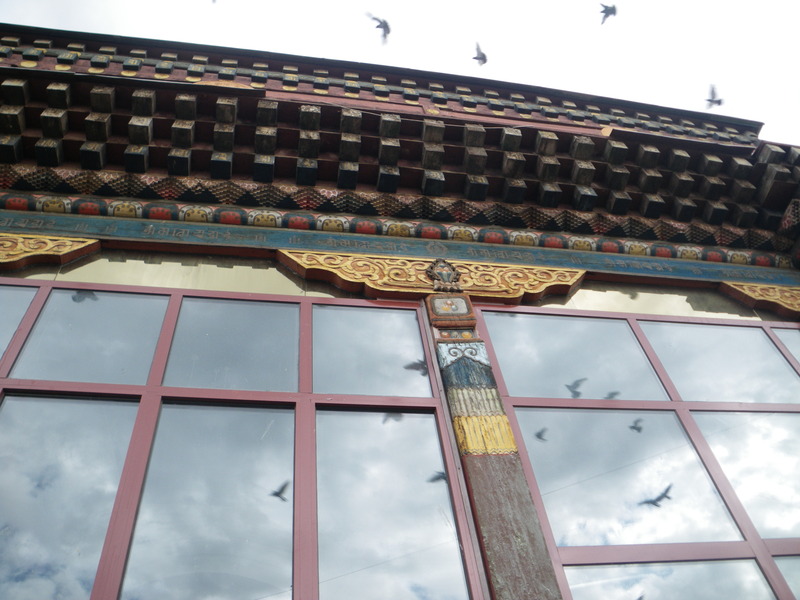
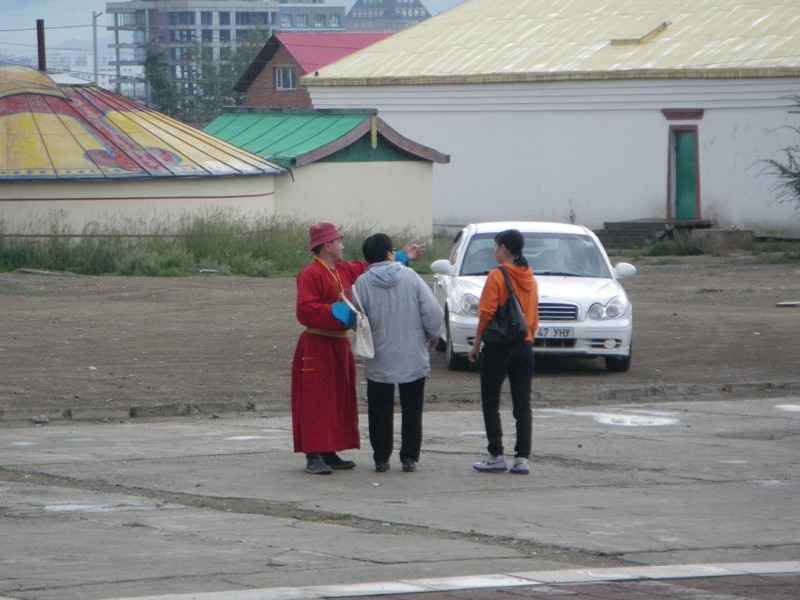

While the building itself survived the Communists, the inside did not. It now houses a huge Buddha and a few other statues, all of them modern.
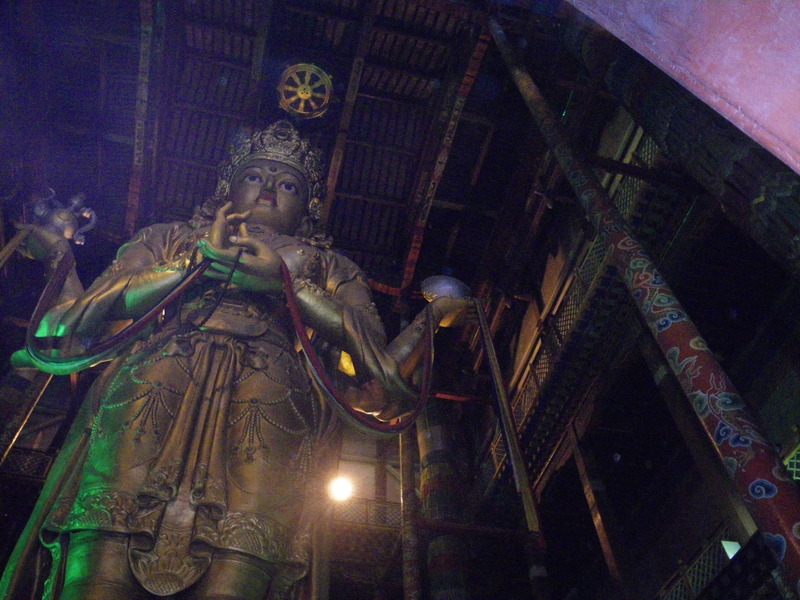
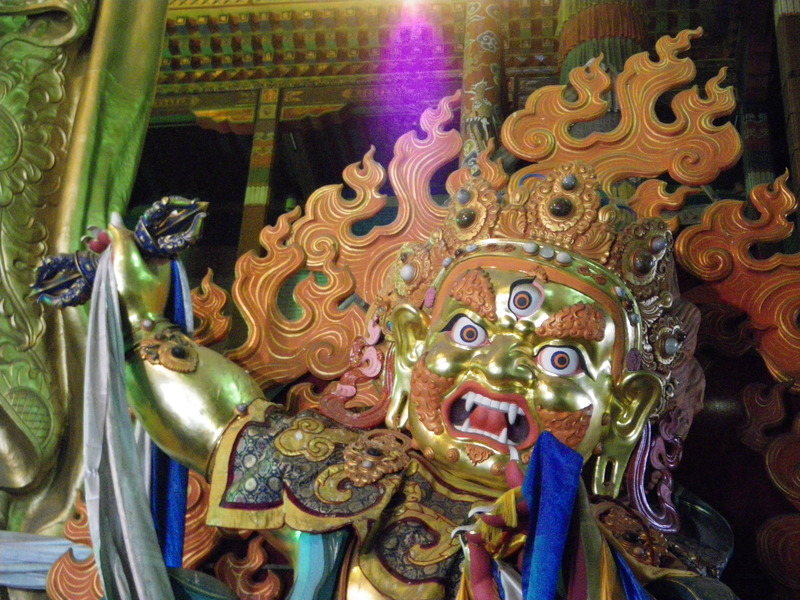
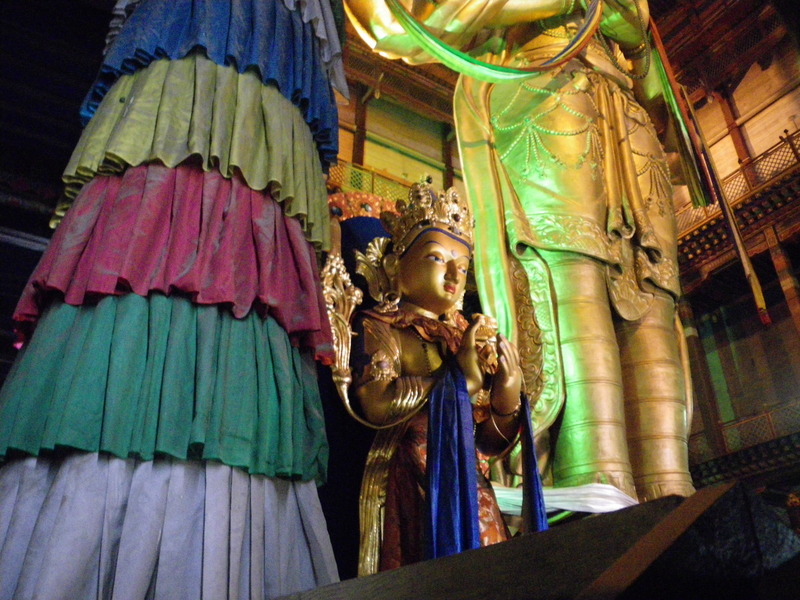
It also has a number of prayer wheels, each of which contains the text of a sutra. When turned, the effect is supposed to be the same prayerful effect as reading the sutra.
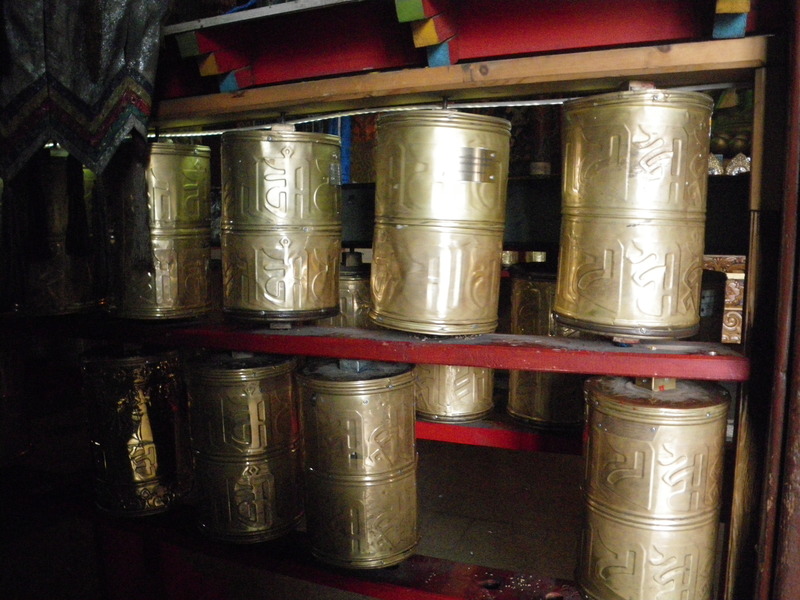
Although recent, the other buildings are also nice examples of Mongolian temple architecture.

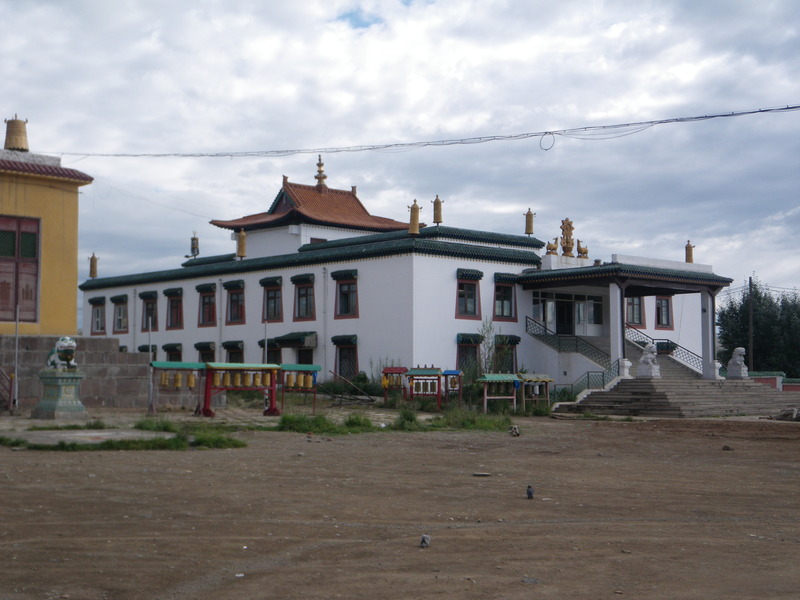

I visited two museums in Ulaan Baatar: the National Museum of Mongolia, and the Mongolian Museum of Natural History. Mongolian museums and other tourist attractions have a price for admission, and a higher price if one wants to take pictures. I paid the price for photos in the first museum. As a result, I was able to take pictures of this horse-head fiddle and other musical instruments.
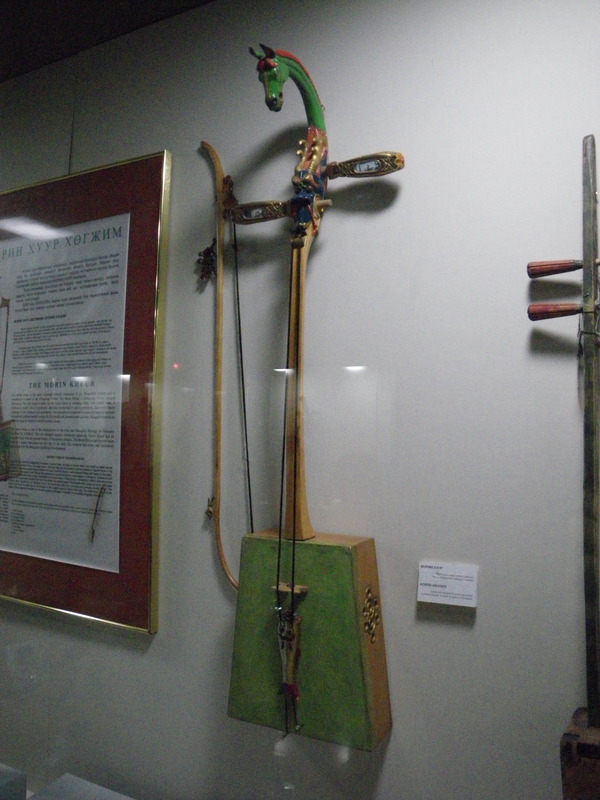
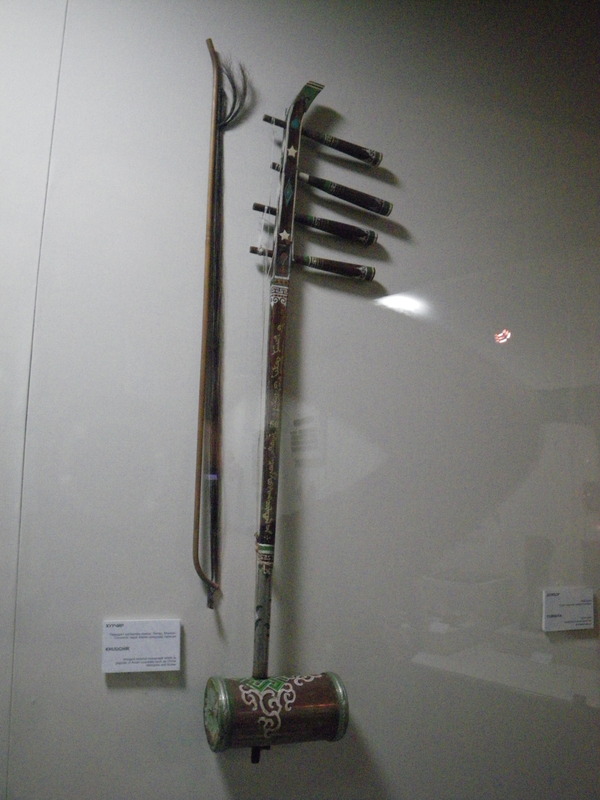
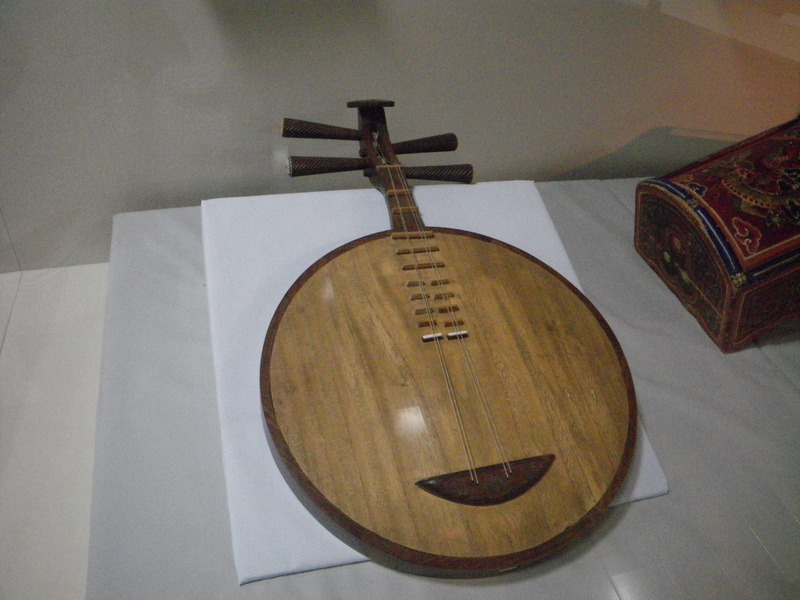
There was also a good display about the time of Chinggis Khan and his successors, including this Mongol warrior, and the black and white standards they followed.
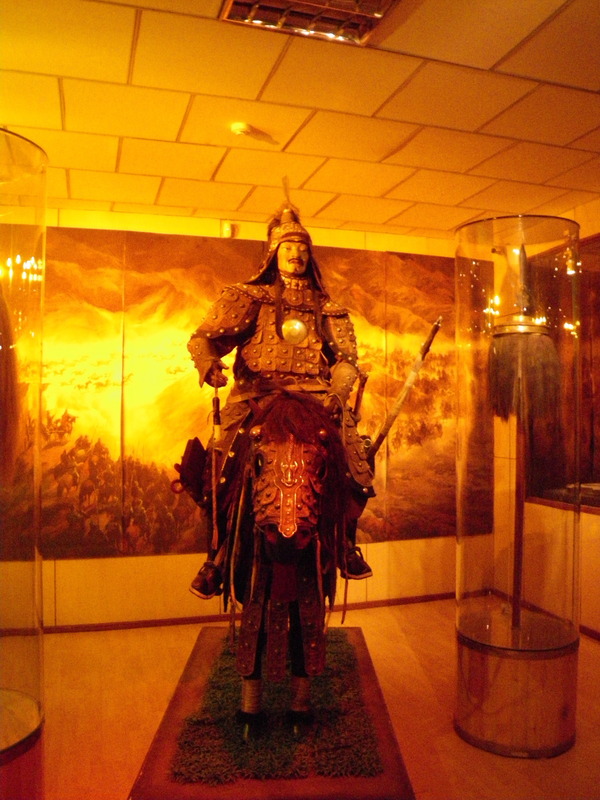

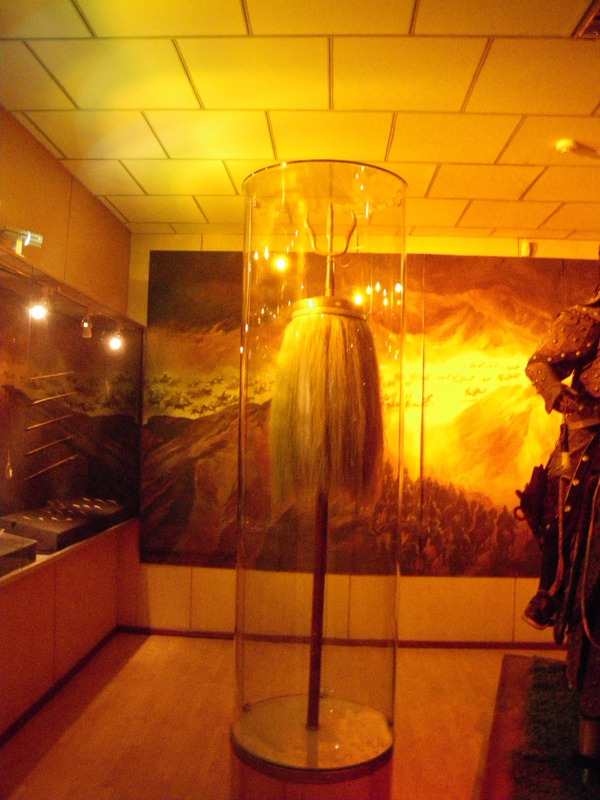
There were also exhibits about Marco Polo, about the establishment of Buddhism in the country, about the period of the Manchu occupation of Mongolia, about the communist period, and about the post-communist (current) period. It is my impression that since the 1600s, Russia and China have taken turns wielding influence and sometimes dominance in Mongolia. My impression from the visit was that the Russian influence was much preferred to the Chinese (Manchu) rule.
There was one section about Mongolian traditional clothing that included a lot of information about Mongolian ethnic groups.
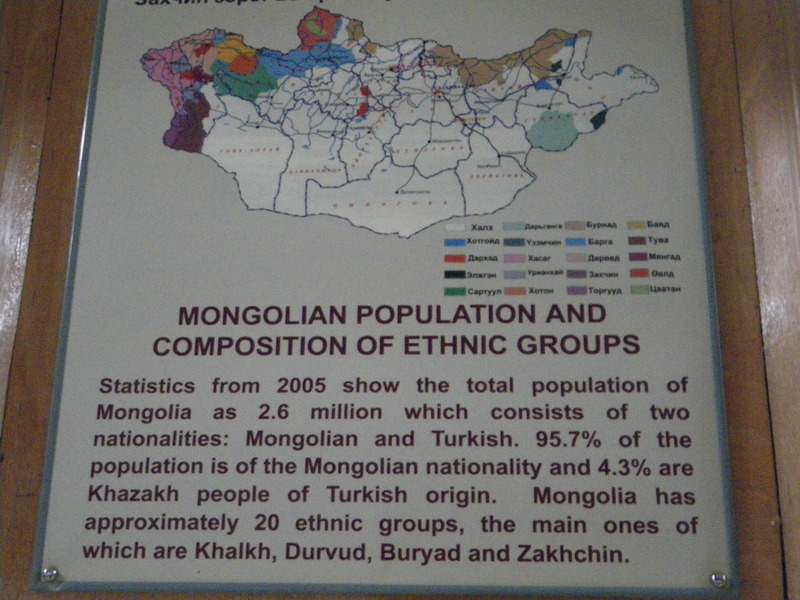

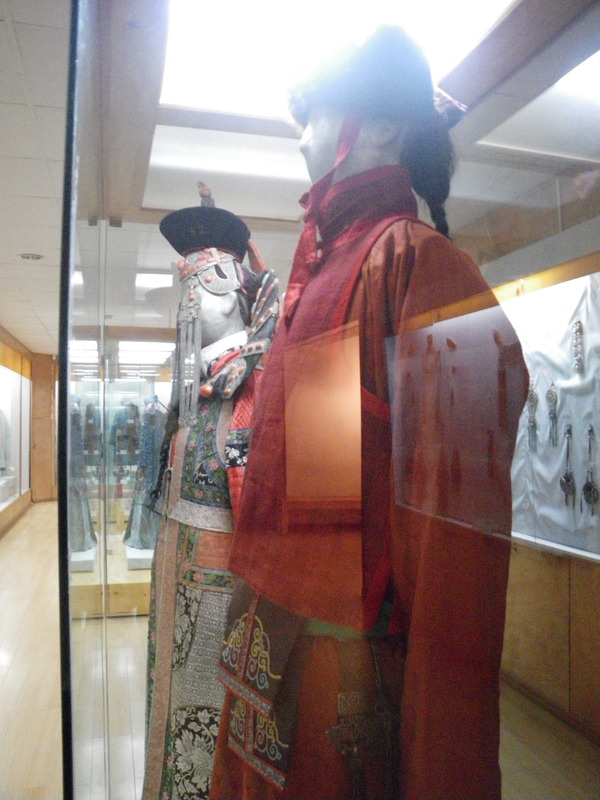
In the Natural History museum, I did not have enough local currency (Togrog) to pay the fee for photography, they did not take foreign currency, and in any case the top exhibits, the dinosaur skeletons from the Gobi desert, were off limits to photography even with the fee. So I don't have any pictures from inside the museum. I can say that this is where I learned more about the Gobi bear and tentatively identified the plants I had seen in the Gobi. There are many displays of local animals and plants, some of them very instructive for someone like me, interested in the natural world.
I can also say that the dinosaur skeletons are very nice, including some baby dinosaurs and one huge and fierce two-legged carnivorous dinosaur.
In Ulaan Baatar I also went to a show at the Tumen Ekh Ensemble Palace, featuring Mongolian performing arts. I had changed more money into Togrog, so I could afford to pay the picture fee. The performances varied from a full-fledged orchestra, including a performance by a solo horse-head fiddle, to folk and religious songs and dances, to a contortionist.
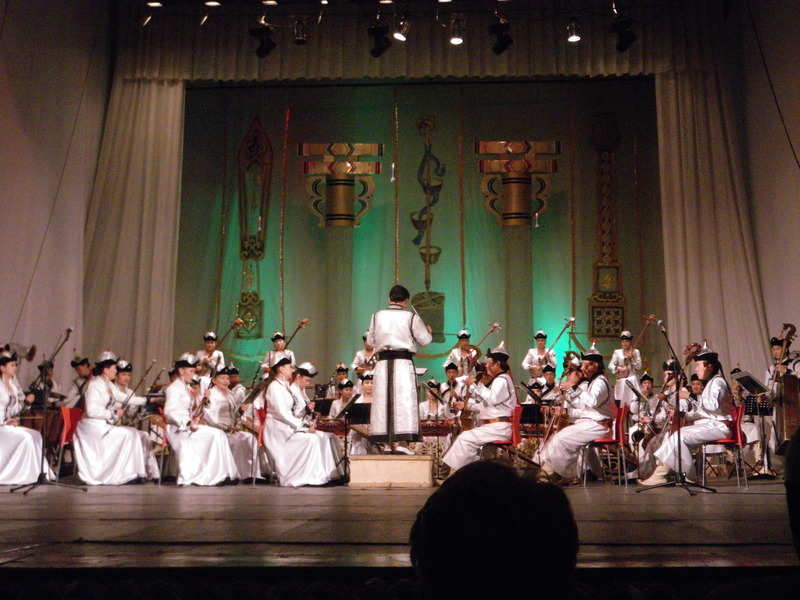
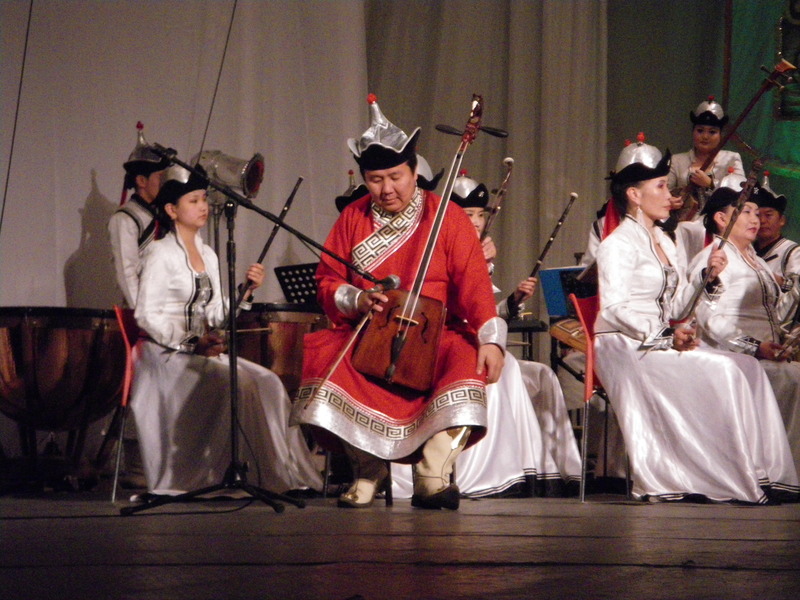
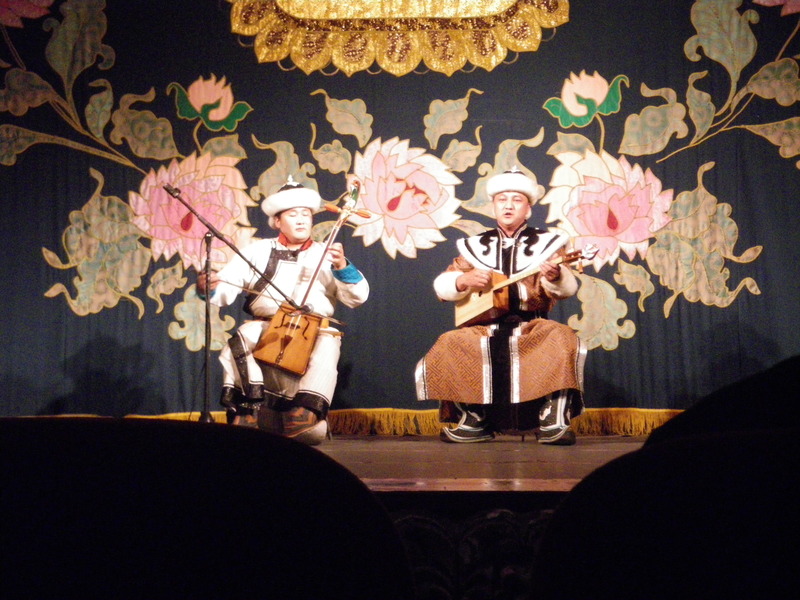
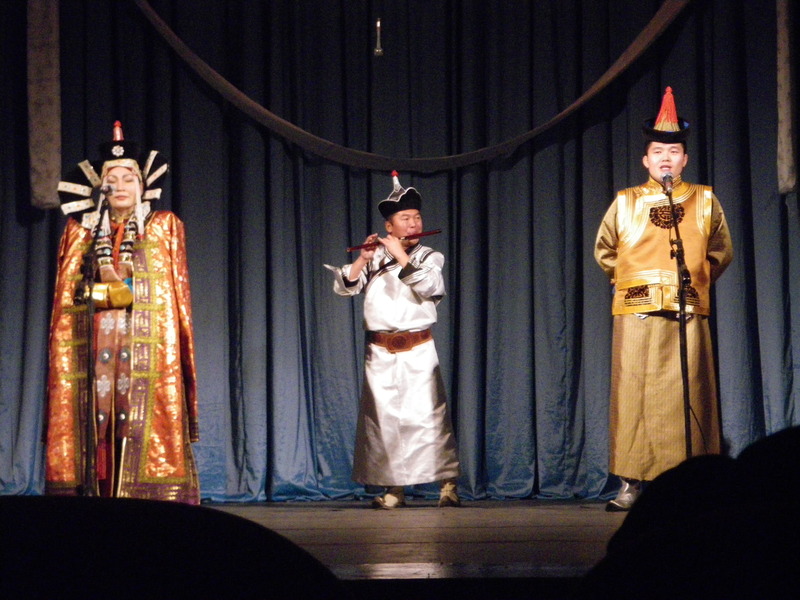
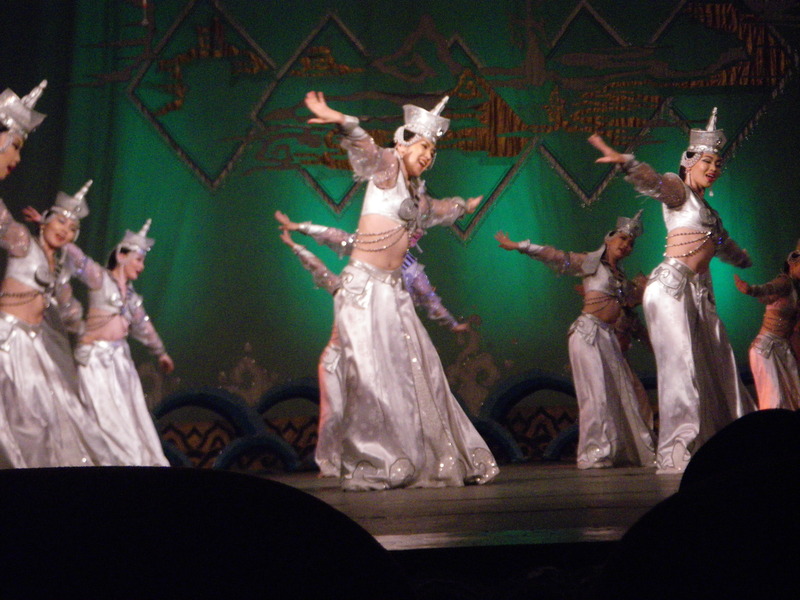

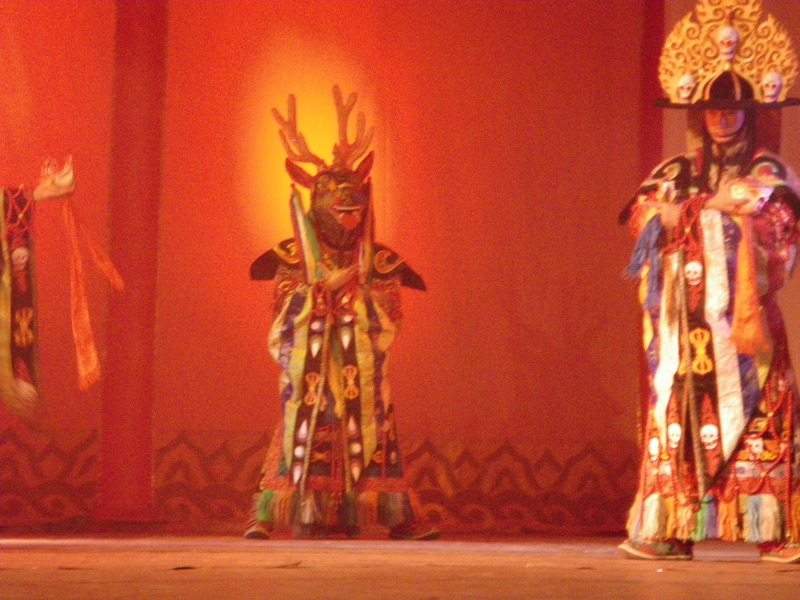

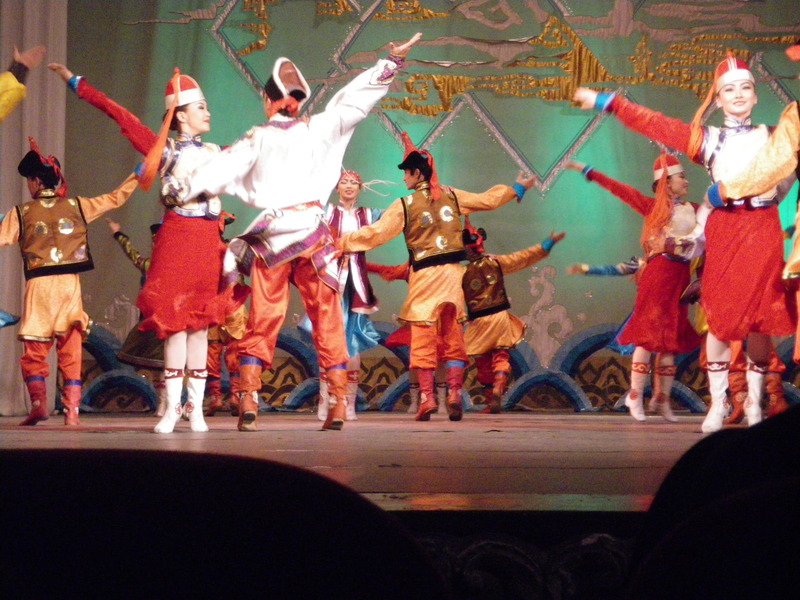


A more complete collection of all the pictures and videos that I shot is here.